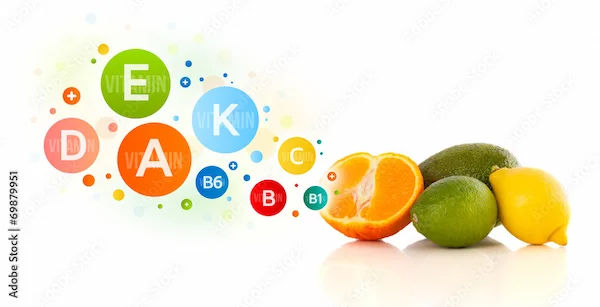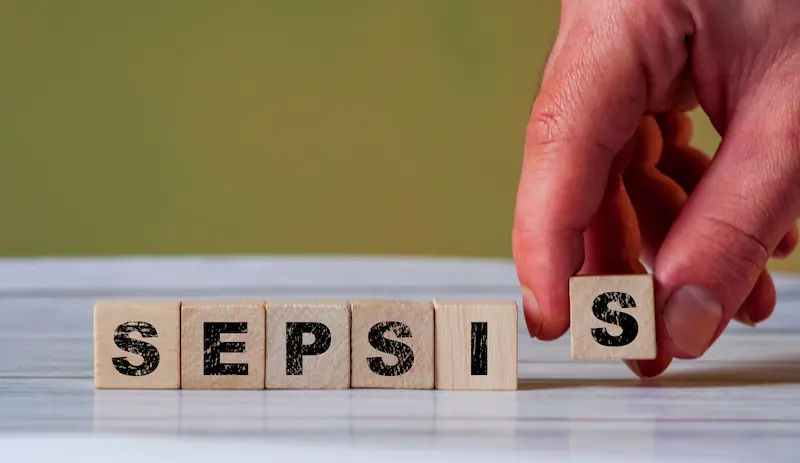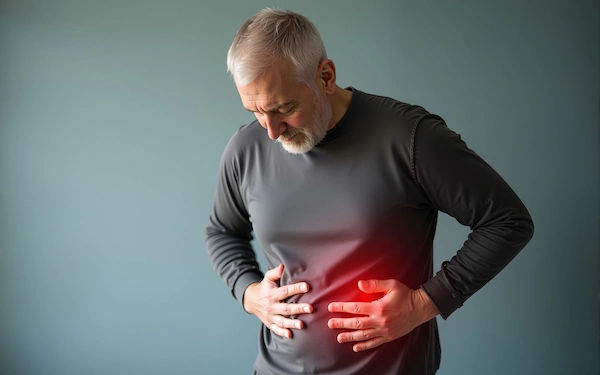Your Guide to Surgery (CTVS): Procedures, Recovery, and Modern Care
Know about the CTVS surgery, three components, common conditions treated, types of CTVS, rise of robotic cardiac surgery and life after surgery.

Written by Dr. Mohammed Kamran
Reviewed by Dr. Dhankecha Mayank Dineshbhai MBBS
Last updated on 8th Oct, 2025

Introduction
Facing the prospect of cardiac surgery can feel overwhelming. The term "CTVS" or "open-heart surgery" often brings a mix of anxiety and hope. But understanding what it entails is the first step toward taking control of your heart health. This guide is designed to demystify the world of Cardiothoracic and Vascular Surgery (CTVS), walking you through everything from the conditions it treats to the advanced, life-saving procedures and the road to recovery. We’ll explore how modern techniques are making these surgeries safer and less invasive than ever before. Whether you're seeking information for yourself or a loved one, our goal is to provide clarity and confidence as you navigate this important healthcare journey, highlighting when it's crucial to consult with a specialist from a platform like Apollo24|7 for personalised advice.
What is Cardiothoracic and Vascular Surgery (CTVS)?
Cardiothoracic and Vascular Surgery, often abbreviated as CTVS, is a highly specialised branch of medicine focused on surgically treating conditions affecting the heart, lungs, oesophagus, and major blood vessels (the aorta and arteries). Think of a CTVS surgeon as a master craftsman who repairs the body's most vital pumps and pipelines. This field is a cornerstone of modern medicine, offering solutions for problems that medications alone cannot fix. The scope of CTVS is broad, but it can be broken down into three key areas, making it a comprehensive discipline for thoracic cavity health.
Consult a Top Surgeon for Personalised Advice
The Three Components: Cardio, Thoracic, Vascular
- Cardio (Heart): This involves surgery on the heart itself. Procedures include coronary artery bypass grafting (CABG) to restore blood flow, valve repair or replacement to ensure blood flows in the correct direction, and surgery to correct congenital heart defects.
- Thoracic (Chest/Lungs): This focuses on organs within the chest cavity outside the heart, primarily the lungs and oesophagus. This can include surgery for lung cancer, biopsy of lung tissue, or treatment for conditions like emphysema.
- Vascular (Blood Vessels): This deals with the network of arteries and veins throughout the body. A common vascular surgery procedure is repairing an aortic aneurysm—a dangerous bulge in the body's main artery—or clearing blockages in the carotid arteries that supply blood to the brain.
Common Conditions Treated by CTVS Surgeons
CTVS interventions are typically recommended for serious, often life-threatening conditions. Understanding the underlying problem helps clarify why a specific procedure is needed.
Coronary Artery Disease (CAD) and the Need for Bypass
Coronary Artery Disease is the most common heart disease, where plaque builds up inside the coronary arteries, narrowing them and reducing blood flow to the heart muscle. This can cause chest pain (angina) and, if an artery becomes completely blocked, a heart attack. When medications or stents are not sufficient, Coronary Artery Bypass Grafting (CABG) is the gold-standard surgical treatment. This procedure creates new pathways for blood to flow around the blocked arteries, effectively "bypassing" the blockage.
Heart Valve Disorders: Stenosis and Regurgitation
Your heart has four valves that act as one-way doors to ensure blood flows correctly. Two main problems can occur:
- Stenosis: The valve opening becomes narrowed, restricting blood flow.
- Regurgitation: The valve becomes "leaky," allowing blood to flow backwards.
These conditions force the heart to work harder, leading to heart failure over time. Heart valve surgery can either repair the patient's own valve or replace it with a mechanical or biological one.
Aortic Aneurysms and Dissections: A Vascular Emergency
The aorta is the body's largest artery. An aneurysm is a weak spot that causes it to balloon outwards, risking a rupture a often fatal event. An aortic dissection is a tear in the inner layer of the aorta, causing blood to flow between the layers and forcing them apart. Both are medical emergencies requiring immediate aortic surgery to repair or replace the damaged section of the aorta.
Types of Cardiac Surgery Procedures
The field of CTVS has evolved dramatically, with a strong trend towards minimising surgical impact.
Coronary Artery Bypass Grafting (CABG)
Often called "bypass surgery," CABG is one of the most common procedures in CTVS. The surgeon uses a healthy blood vessel—often taken from the patient's leg (saphenous vein) or chest (internal mammary artery)—to create a new route for blood to reach the heart muscle, bypassing the blocked coronary artery. A single surgery can involve multiple bypasses (e.g., double, triple, or quadruple bypass).
On-Pump vs. Off-Pump CABG
A key decision during CABG involves the use of the heart-lung machine.
- On-Pump: The machine takes over the function of the heart and lungs, circulating blood and adding oxygen while the heart is stopped. This provides a still, bloodless field for the surgeon to work.
- Off-Pump (Beating Heart Surgery): The surgery is performed while the heart is still beating. This avoids potential complications associated with the heart-lung machine but is technically more challenging.
The Rise of Minimally Invasive and Robotic Cardiac Surgery
This is a game-changer in cardiac surgery. Instead of a traditional sternotomy (a long incision through the breastbone), surgeons make several small incisions between the ribs. Using specialised instruments and often a robotic system for enhanced precision, they can perform complex procedures like valve repairs and CABG. The benefits are significant: less blood loss, reduced pain, shorter hospital stays, and a faster recovery with minimal scarring.
The Patient Journey: From Diagnosis to Recovery
Step 1: Pre-operative Assessment and Preparation
This phase involves thorough testing—blood tests, imaging (like echocardiograms), and heart catheterisation—to plan the surgery. You will meet with your surgeon, anesthesiologist, and other team members. It's also a time to optimise your health by managing medications, quitting smoking, and adjusting your diet. If you need diagnostic tests like an HbA1c for diabetes management, Apollo24|7 offers convenient home collection to simplify your pre-surgery preparation.
Step 4: Cardiac Rehabilitation: The Key to Long-Term Success
Cardiac rehab is a supervised program of exercise, education, and counselling that begins in the hospital and continues for weeks to months after discharge. It is absolutely crucial for strengthening your heart, reducing the risk of future problems, and helping you return to a normal, active life. It addresses not just physical recovery but also the psychological aspects of healing.
Life After Cardiac Surgery: What to Expect
Recovery continues at home. You'll need to care for your incision, gradually increase activity, and adhere to new medications, like blood thinners if you have a mechanical valve. Dietary changes (low-salt, low-fat) and lifelong commitment to a heart-healthy lifestyle are paramount. It's normal to experience emotional ups and downs; support from family, friends, and support groups is vital. If you have concerns about your recovery or new symptoms arise, consulting a doctor online with Apollo24|7 can provide timely reassurance and guidance without the need to travel.
Conclusion
Cardiac surgery is a profound medical achievement that has given millions of people a second chance at life. While the journey is demanding, modern CTVS techniques have made it safer and recovery smoother than ever before. The success of the surgery, however, is a partnership between the skilled surgical team and you, the patient. By committing to the recovery process and adopting a heart-healthy lifestyle, you can not only heal from the procedure but also build a stronger, healthier future. Remember, this journey is a marathon, not a sprint, and every step forward is a victory.
Consult a Top Surgeon for Personalised Advice
Consult a Top Surgeon for Personalised Advice

Dr. Syed Akram Ali
Cardiologist
14 Years • MBBS DCH DNB(PED) DNB(CARD) CONSULTANT INTERVENTOINAL CARDIOLOGIST, EUROPEAN SOCIETY OF CARDIOLOGY CERTIFIED HEART FAILURE SPECIALIST
Hyderabad
AYMAN POLYCLINIC, Hyderabad
Dr. Mahendranath Subramani Prasad
Cardiologist
16 Years • MBBS,MS ,DNB, M.Ch. Cardiovascular and Thoracic Surgery(Cardiology)
Bengaluru
Apollo Clinic, Sarjapur Road, Bengaluru

Dr. Zulkarnain
General Physician
2 Years • MBBS, PGDM, FFM
Bengaluru
PRESTIGE SHANTHINIKETAN - SOCIETY CLINIC, Bengaluru
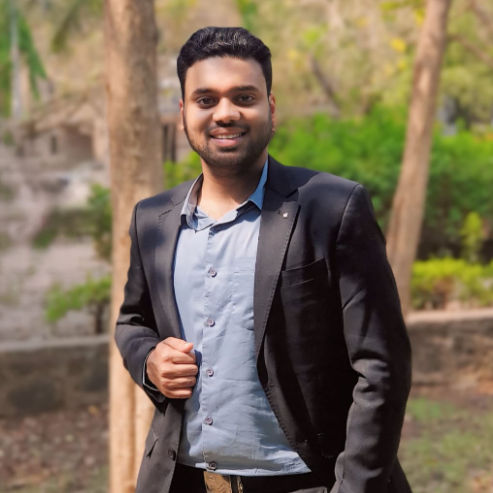
Dr. Anand Ravi
General Physician
2 Years • MBBS
Bengaluru
PRESTIGE SHANTHINIKETAN - SOCIETY CLINIC, Bengaluru
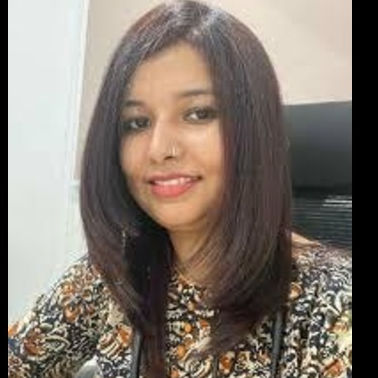
Dr. Sumanjita Bora
Cardiologist
9 Years • MBBS, PGDCC
Bengaluru
Apollo Clinic, Sarjapur Road, Bengaluru
Consult a Top Surgeon for Personalised Advice

Dr. Syed Akram Ali
Cardiologist
14 Years • MBBS DCH DNB(PED) DNB(CARD) CONSULTANT INTERVENTOINAL CARDIOLOGIST, EUROPEAN SOCIETY OF CARDIOLOGY CERTIFIED HEART FAILURE SPECIALIST
Hyderabad
AYMAN POLYCLINIC, Hyderabad
Dr. Mahendranath Subramani Prasad
Cardiologist
16 Years • MBBS,MS ,DNB, M.Ch. Cardiovascular and Thoracic Surgery(Cardiology)
Bengaluru
Apollo Clinic, Sarjapur Road, Bengaluru

Dr. Zulkarnain
General Physician
2 Years • MBBS, PGDM, FFM
Bengaluru
PRESTIGE SHANTHINIKETAN - SOCIETY CLINIC, Bengaluru

Dr. Anand Ravi
General Physician
2 Years • MBBS
Bengaluru
PRESTIGE SHANTHINIKETAN - SOCIETY CLINIC, Bengaluru

Dr. Sumanjita Bora
Cardiologist
9 Years • MBBS, PGDCC
Bengaluru
Apollo Clinic, Sarjapur Road, Bengaluru
More articles from General Medical Consultation
Frequently Asked Questions
What is the typical recovery time after open-heart surgery?
Most patients spend 5-7 days in the hospital. Full recovery, including returning to all normal activities and completing cardiac rehab, typically takes 2 to 3 months. However, recovery is individual, and following your doctor's advice is essential.
What is the difference between a cardiac surgeon and a cardiologist?
A cardiologist is a doctor who diagnoses and manages heart disease using medications, lifestyle advice, and non-surgical procedures like placing stents. A cardiac (CTVS) surgeon performs operations to correct structural problems in the heart and blood vessels. They work closely together as a team.
Are there age limits for cardiac surgery?
There is no strict age limit. The decision for surgery is based on a patient's overall health, the severity of the condition, and the potential benefits versus risks. Successful heart surgeries are performed on patients in their 80s and 90s.
How long does a heart valve replacement last?
Mechanical valves are designed to last a lifetime but require lifelong blood-thinning medication. Biological valves (from animal tissue) typically last 10-20 years but usually don't require long-term blood thinners. The choice depends on your age and individual health profile.
Is robotic cardiac surgery as effective as traditional surgery?
For selected patients and procedures, yes. Studies show that robotic cardiac surgery offers comparable effectiveness to traditional surgery in terms of correcting the problem, with the added benefits of less pain, shorter hospital stays, and a quicker return to normal life.


